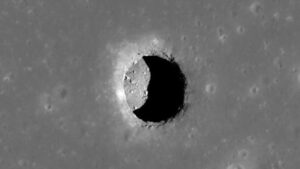While NASA and SpaceX have recently stayed as busy hogging headlines as firing off rockets, one Japanese company very quietly beat them to the punch.
ispace’s Hakuto-R mission spent months making it to the moon on a far-ranging, fuel-efficient program. Now it’s primed to touch down on the lunar surface within 24 hours.
The Hakuto-R probe could begin landing protocols as early as 11:40 am ET (15:40 UTC) on Tuesday, Ars Technica reported. It’s currently orbiting the moon, preparing to descend if all systems are go.
We’ve received another incredible photo from the camera onboard our Mission 1 lander!
Seen here is the lunar Earthrise during solar eclipse, captured by the lander-mounted camera at an altitude of about 100 km from the lunar surface. (1/2) pic.twitter.com/pNSI4lPnux
— ispace (@ispace_inc) April 24, 2023
It’s the first mission for Hakuto-R, which ispace refers to, somewhat charmingly, as “let’s go to the moon.” Rhetoric notwithstanding, ispace’s intent is all business. It’s tasked with delivering multiple payloads to the lunar surface, including the lunar rover of the United Arab Emirates government, according to Ars Technica.
More broadly, the company’s founder said as early as 2018 that he’s harboring a “long-term vision” to establish a human tourist presence on Earth’s familiar satellite.
First thing’s first, though: Land a spacecraft on the moon.
Hakuto-R took the plunge toward that objective 134 days ago when it launched from a site near Tokyo. And although ispace snagged today’s celestial headlines, it wouldn’t have done it without SpaceX’s intervention — the probe launched atop one of the company’s Falcon 9 rockets.
Various announcements of successful mission procedures followed the Dec. 11, 2022 launch. The Hakuto-R mission control team first confirmed orbital control over the probe the day after launch. The little lander spent a month navigating deep space — another mission landmark.
Founded in 2010, ispace is relatively young and small, with 214 employees. But its solvency will help the future of lunar exploration via the Artemis mission. Hakuto-R’s next foray, booked for 2024, will gather moon rocks for NASA research.
Hakuto-R’s first moon mission is no less ambitious. Success tomorrow means landing the craft safely, then deploying the rover (and another “transformable lunar robot” on board, according to Ars Technica).
Communication with mission control is a clear objective and you can watch the whole thing via live stream.






